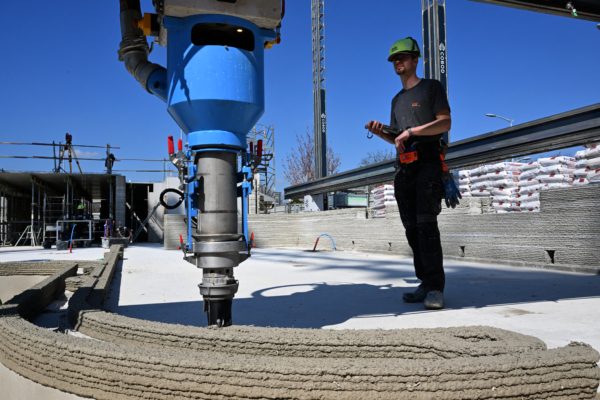In a unique collaboration between the Swiss Federal Institute of Technology (ETH Zurich) and the Origen cultural foundation, a 30-meter-high white tower named Tor Alva has been created using 3D printing technology in the remote mountain village of Mulegns in eastern Switzerland. This architectural marvel stands as the tallest 3D-printed building in the world, injecting new vitality into the small village with a population of only 11 residents.
ETH Zurich and the Origen cultural foundation embarked on this project to revitalize the development of Mulegns, which is facing the threat of depopulation. The innovative structure, Tor Alva, serves as both a new architectural landmark and a pioneering example of 3D printing in construction, pushing the boundaries of design and technology.
Designed collaboratively by the school’s digital architecture technology professor Benjamin Dillenburger and architect Michael Hansmeyer, the white tower deviates from traditional concrete templates. Instead, algorithms were utilized to generate decorative and structural elements, which were then layered by industrial robots to apply concrete without the need for conventional support molds.
The tower is comprised of 32 sculptural white concrete columns, resembling a grand layered cake. These columns span four levels, tapering and branching increasingly upwards in a tree-like manner, culminating in a circular domed space at the top. This space can serve as a small theater or provide visitors with panoramic views of the surrounding mountain landscape.
On May 20th, a grand inauguration ceremony was held to unveil the white tower, attended by partners, government officials, and dignitaries from the fields of science, politics, and art. The symbolism and technological significance of the tower were unanimously recognized by the attendees.
Joël Mesot, the president of ETH Zurich, views the tower as a symbol of collaboration between the scientific and industrial sectors. He remarks, “This tower combines the latest research findings with the professional knowledge of companies and experts. Building this tower at the foot of the Julier Pass also provides our researchers with valuable practical experience.”
Giovanni Netzer, founder of the Origen cultural foundation and theater director, describes the project as a striking fusion of technological and artistic intentions. He expresses his fascination with the interaction between digital design, traditional craftsmanship, cultural memory, and artistic forms, emphasizing the tower’s influence on the architecture industry, promotion of sustainable tourism, and creation of new cultural spaces, ultimately bringing new opportunities to a declining village.
Since May 23rd, the white tower has been open daily for guided tours. Starting in July, the building will also host stage performances. The structure is planned to remain in Mulegns for approximately five years before being dismantled and potentially erected in a new location, presenting a transient yet impactful addition to the village’s landscape.

